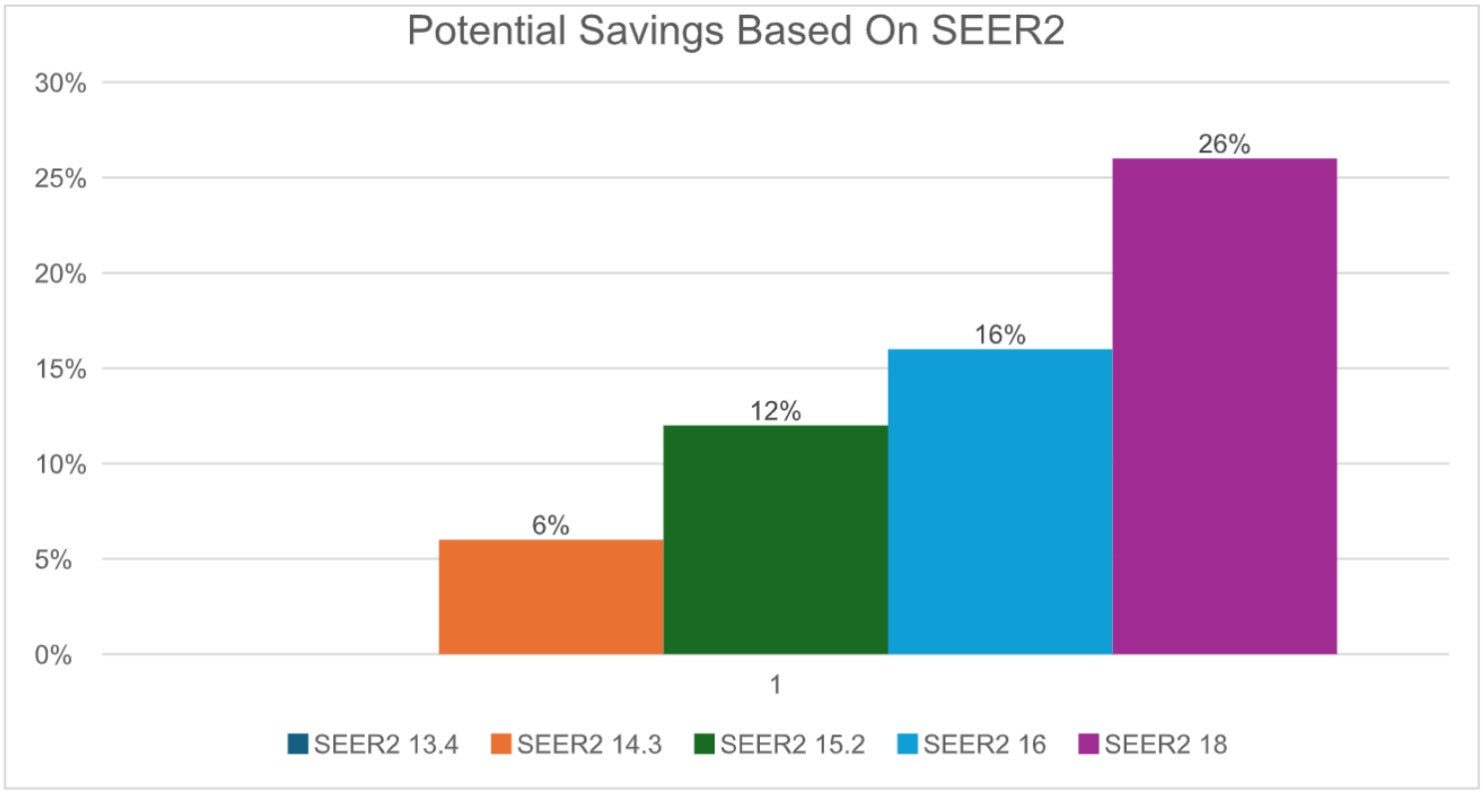What is the meaning of SEER?
SEER is the Seasonal Energy Efficiency Ratio, which measures the cooling output of an air
conditioner over a typical cooling season, divided by the energy it uses in Watt-Hours.
A higher SEER rating means the air conditioner is more energy efficient.
What is the Difference Between SEER and SEER2?
SEER2 is an updated version of the SEER rating system.
The main difference lies in the testing conditions for each rating system. SEER2 has raised the
total external static pressure testing conditions to make them more representative of real-world
applications, especially in typical residential settings where ducted systems are used.
This was done to align more closely with ongoing efforts to reduce overall energy consumption
in the United States.
What is single-stage cooling?
Single-stage cooling is a common type of HVAC system in the US that operates at full capacity
to cool or warm a home, turning off once the desired temperature is reached.
They are controlled by a single-stage thermostat and are less expensive to purchase and install.
However, they can be costly to operate due to their frequent on-off cycles, which are less
energy-efficient than other systems and may result in issues with dehumidification and uneven
cooling or heating.
What is two-stage cooling?
Two-stage cooling refers to the type of compressor found in the outdoor condensing unit. This
innovative feature allows for two levels of operation, offering full capacity on hot summer days
and reduced capacity on milder days. Compared to traditional single-stage units, two-stage
cooling provides an excellent energy-efficient option. A two-stage cooling system can use
reduced capacity to sustain your desired indoor temperature.
What is Variable Speed?
Variable speed compressor and fan motor technologies are revolutionizing the way we cool and
heat our homes. By allowing units to run at varying speeds based on cooling demands, these
technologies offer superior energy efficiency compared to traditional single-speed units.
With variable speed compressor technology, your system can run at full capacity on hot days
and reduce capacity on milder days, while variable speed fan motor technology ensures precise
control of airflow throughout your home.
In fact, according to the Office of Energy Efficiency & Renewable Energy, a variable-speed
motor running continuously at half speed can use up to 75% less power than a single-stage
motor while moving the same amount of air.

What is the meaning of EER2?
EER2 ratings are always calculated with the unit working at an outdoor temperature of 95°F, an
indoor temperature of 80°F, and at 50% humidity.
A higher EER2 rating means that your air conditioner is more energy efficient, and this is a good
thing, as it will save you money on your utility bills and reduce your carbon footprint.
The Department of Energy has set minimum EER2 standards that all air conditioners must meet
starting Jan. 1, 2023. These minimum standards vary based on the region of the country and
system capacity.
What is an HSPF2 rating for a heat pump?
The HSPF, or Heating Seasonal Performance Factor, is a crucial rating that assesses the
efficiency of a heat pump during the heating season. This rating is determined by dividing the
total heat output of the heat pump in BTUs by the total electricity consumed in watt-hours.
A higher HSPF rating signifies a more efficient heat pump, leading to lower energy usage and
greater long-term cost savings.


